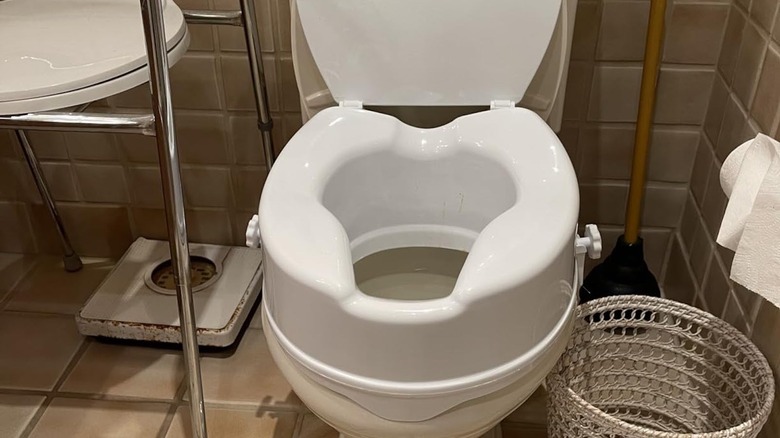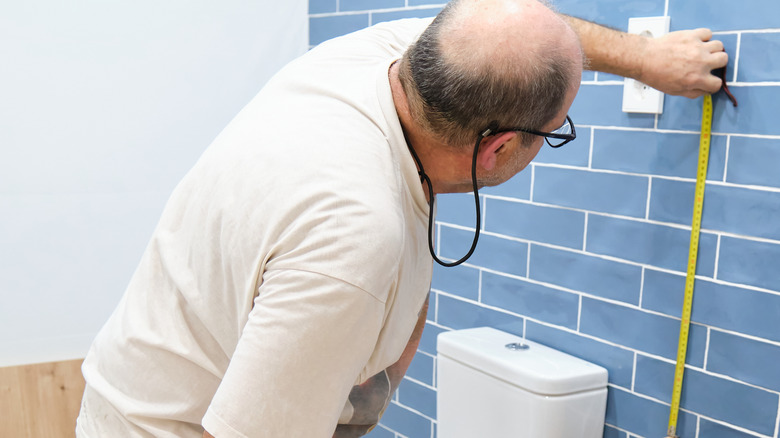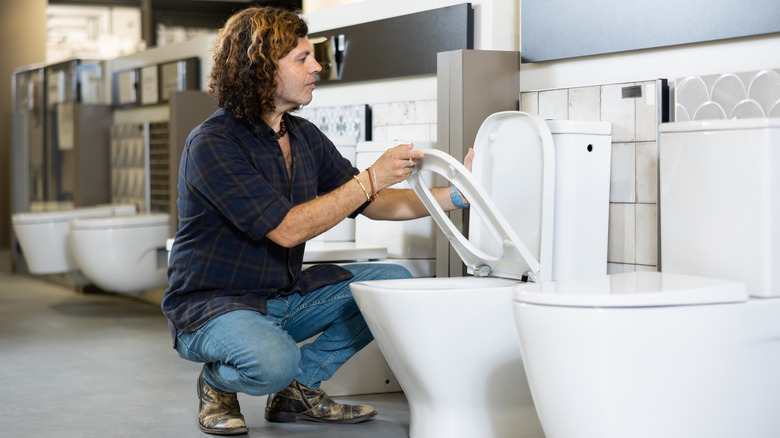Elevated Toilet Seats: Before You Raise It Up, Don't Overlook These Key Details
We may receive a commission on purchases made from links.
You or a loved one might have toilet accessibility challenges, but it doesn't mean your bathroom needs to resemble that of a hospital. Installing an elevated toilet seat is one of the best tips to improve your toilet's accessibility aesthetically — it's right up there with designer grab bars and nifty electronic bidets. As with any major appliance purchase, you need to do a bit of homework before you buy your raised toilet seat. Take necessary measurements, consider any limitations in your bathroom floor plan, and consider which special features, if any, you may want. Don't forget to set a budget!
These safe, helpful toilet add-ons — you might sometimes see them named raised toilet seats, toilet risers, high-rise toilet seats, or toilet booster seats — make a toilet seat taller than standard. This height feature is needed by people with limited mobility or range of motion challenges, be it the result of a recent surgery, an ongoing condition, or advanced age. The exact height these fixtures add to a toilet depends on the model, but it's typically within the 2 to 6 inches range. Most elevated seats are made of sturdy, easy-clean polypropylene plastic and are designed to fit any standard-shaped (round or oval-bowled) toilet, but designs are available for odd-shaped toilets, like those with extra long or square bowls, too. Optional accessories include locks, arms and handles, padding, and more. Some are even portable.
Get out your ruler: Elevated toilet seat fit and accessories
Before you start shopping, measure your leg length from the back of your knee to the floor, then measure the existing toilet from the top of the seat to the floor. Subtract the second measurement from the first to determine what size elevated seat you need. Getting the overall height right is essential since a seat that's too high can impair bladder function. Check, too, whether your current seat is round-fronted (it should be about 16 inches long) or elongated (around 18 inches long). Add this measurement to the height measurements to determine which type of raised seat will fit best.
Have you considered how much space you should set aside for a toilet in your bathroom? Some raised seats have built-in grab rails, making installation with existing fixtures tricky. Most seats also have weight restrictions; make sure you know how much the person using the toilet weighs. For example, bariatric raised toilet seats can support up to 1,000 pounds. Design matters, too. There's everything from simple padded waterproof cushions to highly accessorized versions. Do you need a seat that locks to the toilet bowl, or are others with no mobility issues using the same toilet? Do you need a hinged seat? Lids and splash guards are optional but might be imperative if you're particularly concerned about hygiene. Worried about fall prevention? Consider a seat that lets you personalize the height and angle.
Price versus function: Buying the right raised toilet seat
While cost is likely a major concern, elevated toilet seats aren't wildly expensive. A 4-inch thick toilet seat cushion, attached to the bowl with velcro straps, will set you back $39.99 at NewLeaf Home Medical. The Mayo Clinic Store has a portable plastic 5-inch-tall elevated toilet seat for $54.95. Drive Medical makes a 5-inch-tall toilet seat riser with all the bells and whistles — namely removable, adjustable padded arms, sturdy locks — that sells for under $45 on Amazon. If you want something permanent, you can also buy chair-height toilets. They're around 2 to 4 inches taller than a standard fixture and you install them as you would a regular toilet. Wayfair sells a HOROW 1.28-gallon round chair-height two-piece toilet with seat included for around $200.
Despite being an assistance device, elevated toilet seats are rarely covered by insurance. However, check with your provider before you buy one; you might be the exception. Plus, getting it right the first time is vital when it comes to not wasting money since U.S. Food and Drug Administration regulations restrict the return of toilet fixtures. With the exception of chair-height toilets, installing seats is almost always an easy DIY job — just make sure you follow the manufacturer's instructions. Regular maintenance tips that'll keep your toilet in tip-top shape also apply to plastic elevated seats; stick to a regular cleaning schedule and use the same cleaning and disinfectant products. The makers of padded seats should provide specialist cleaning instructions.


